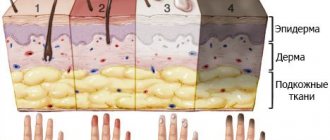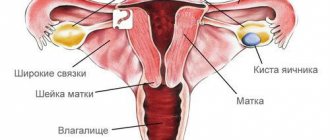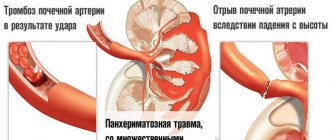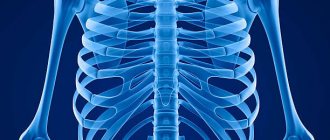What is hypothermia
Hypothermia is a decrease in body temperature below normal (35°C).
In 1868, German physician Karl Reinhold August Wunderlich established that 36.6°C is a normal body temperature. He arrived at this figure by measuring the temperature of 25 thousand patients. However, 100 years later, researchers from the University of Maryland established the norm at 36.8°C¹. Today, normal body temperature is considered to be from 35.2 to 36.8 ° C in the axillary region, 36.4-37.2 ° C under the tongue and 36.2-37.7 ° C in the rectum. During the day, body temperature may vary slightly. As a rule, it increases in the evening. Normal daily fluctuations are on the order of 0.5-0.7 degrees. During vigorous activity, the temperature rises due to increased blood circulation. And during sleep, when all processes slow down, body temperature also decreases.
Body temperature below 35°C is a deviation from the norm. Photo: Iri-s / Depositphotos
Low body temperature in an adult is accompanied by the following physiological effects:
- Slowdown of all functions. A decrease in body temperature leads to a slowdown in almost all functions in the body. The pulse decreases, metabolism slows down, nerve conduction and neuromuscular reactions decrease. Mental activity also decreases.
- Cold diuresis. During hypothermia, the production of the antidiuretic hormone vasopressin decreases. This hormone is responsible for maintaining fluid in the body and concentrating urine. When there is little of it, increased diuresis is observed. Hypovolemia develops - a decrease in the volume of circulating blood.
- The diver's effect is when the blood vessels in the muscles constrict when immersed in water. Blood is pumped to vital organs - heart, brain, lungs. This phenomenon is also typical for hypothermia. The body tries to adapt to emergency conditions, ensuring the normal functioning of vital organs.
Over the years, a person's metabolism also slows down. In addition, older people move less. Therefore, people over 65 years of age often have a lower temperature than younger people. Another factor of hypothermia in old age is impaired skin sensitivity and a decrease in the amount of subcutaneous fat.
Why are non-contact thermometers wrong?
Infrared non-contact thermometers are very convenient and practical. The device instantly produces results without coming into contact with the human body. But there is also a fly in the ointment. Such thermometers give an error of up to 1 degree, even if all operating rules are followed. If the examiner violates the distance of the device to the skin, then the error may be even greater.
Another factor influencing the reliability of the measurement is the ambient temperature. In the cold, capillaries narrow. This is necessary to maintain heat in the body. Therefore, the skin temperature of the forehead will be slightly lower than in the armpit area. To improve reliability, it is recommended to point the thermometer beam not at the middle of the forehead, but at the temporal region. There is an artery that maintains the true body temperature.
Prognostic markers
The effect of hypothermia on a person is individual and unpredictable. Cases of successful resuscitation with good neurological outcome have been described when the core temperature was below 14°C. In most victims, this temperature caused generalized coagulopathy and rapid death.
Consequently, even extremely low values of core temperature are not a reason to refuse resuscitation measures. QT interval prolongation >500 ms and high-amplitude J-wave are predictors of fatal arrhythmias. Signs of cell lysis (hyperkalemia >7-10 mmol/L) and generalized coagulopathy (fibrinogen <0.5 g/L) suggest an unfavorable outcome.
Types of hypothermia
Depending on the factors, hypothermia occurs:
- Endogenous - depends on internal factors. For example, a decrease in temperature due to certain diseases or prolonged physical inactivity.
- Exogenous - depends on external factors. For example, hypothermia in cold weather or taking certain medications that lower body temperature.
There are also 3 stages of hypothermia:
- Compensation. This is a condition in which the body easily copes with heat loss by increasing heat production. In particular, this is achieved by increased muscle activity and increased metabolism. Heat transfer is also reduced due to spasm of small peripheral vessels.
- Relative compensation. At this stage, thermoregulatory processes are disrupted and the temperature begins to decrease.
- Decompensation. A severe stage in which the respiratory and heart rate sharply decreases. The level of metabolic processes and blood pressure drop critically.
Depending on body temperature, the following types of hypothermia are distinguished:
- Easy. Body temperature drops to 35-34°C. The person begins to tremble. In this way, the body generates heat through muscle activity. To reduce heat transfer, peripheral blood vessels narrow, causing the skin to become pale. Metabolism and mental activity slow down.
- Average. The temperature drops to 30°C. The pulse decreases noticeably. The heart slows down to conserve heat in the body. The skin becomes cold, acquiring a marbled tint. Against the backdrop of a slowdown in metabolism and biochemical processes in nerve tissues, human consciousness is disrupted. Lethargy and severe drowsiness appear. In severe cases, hallucinations may occur.
- Heavy. The temperature drops to 27°C and below. Under such circumstances, a person loses consciousness. The pulse is almost not palpable in the arm; it can only be detected in the carotid artery. Breathing becomes rare and intermittent. There is a threat of complete cardiac arrest and death.
The negative effects of hypothermia are enhanced under the following conditions:
- severe hunger and fatigue;
- stationary position;
- wet clothes;
- tight shoes;
- immune system diseases;
- heart and vascular diseases;
- heavy blood loss;
- mechanical damage;
- state of alcoholic intoxication.
Low temperature with COVID-19
One of the indicators of the condition of a patient with coronavirus disease is body temperature.
If it is high (above 40°C), then this often indicates a severe course. However, in some cases, severe COVID-19 occurs at low temperatures. Thus, a low body temperature of 35.5°C in an adult and a child with this disease should be alarming. One study suggests that temperatures above 40°C and below 35.5°C in adult patients significantly increase the likelihood of death from the disease2. This is a kind of marker that serves as a signal for doctors to take emergency treatment measures.
Note that research alone is not enough to make final conclusions. Therefore, if your temperature drops below 36°C during coronavirus disease (the norm is 36-36.8°C), there is no need to panic. It is possible that the cause of this symptom is a malfunction of the thermoregulation center. It is located in the hypothalamus, which is very sensitive to viral toxins. It is quite possible that the hypothalamic neurons were also damaged during coronavirus infection, which led to disruption of thermoregulation.
Rewarming and complications
With sharp peripheral vasodilation, arrhythmia and cardiac arrest may develop in several ways: 1. “Acidic” blood from the peripheral vascular bed due to active metabolic processes reaches the “core” of the body, which leads to the development of acidosis. As a result of acidosis, the content of catecholamines in the blood increases, which potentiates increased cardiac activity, increased heart rate, and increased blood pressure. Increased acidosis reduces the sensitivity of receptors to adrenergic substances, and arrhythmia may occur. 2. Due to myocardial damage, hypovolemia, after peripheral vasodilation, blood pressure decreases, which leads to the development of shock. 3. Cold blood from the peripheral parts of the bloodstream reaches the “core,” which leads to increased hypothermia, i.e., a further decrease in the temperature of the “core.”
Causes of low body temperature
There are many causes of hypothermia. First of all, these are environmental factors, such as cold, damp weather. Hypothermia is also observed in some diseases and conditions. Let's take a closer look at them.
With age, metabolism slows down and people move less. The body temperature of the elderly is lower than that of the young. Photo: belchonock/Depositphotos
Exhaustion of the body
For normal functioning, the body needs a full range of nutrients, vitamins and minerals. If a person is on a diet for a long time, then a deficiency occurs. Against this background, metabolism slows down. The level of tissue respiration decreases, and muscle tissue produces less heat. A person becomes weak and often experiences headaches and dizziness.
Exhaustive physical activity is another cause of exhaustion and hypothermia. Athletes need to monitor the intensity of their training and eat well. The body must receive nutrients to replenish energy costs.
Chronic stress also depletes the body. This is due to the actions of stress hormones (cortisol, adrenaline), which disrupt metabolism and reduce immunity. Under such conditions, the body adapts less well to environmental changes. Thermoregulation processes are disrupted, causing temperatures to drop below 36-35°C.
Hypothermia
The most common cause of hypothermia is wearing too light clothing in cold and frosty weather. The effect of hypothermia increases when wet and windy. Therefore, in such weather conditions you need to dress warmer.
The first symptom that occurs during hypothermia is slight trembling. This is how the body tries to warm up. It is important to take action at this stage. Go into a warm room, or better yet, dress for the weather.
With prolonged hypothermia, the fingertips acquire a bluish tint. In severe cases, when the temperature drops to 30-28°C, a person may lose consciousness.
First aid for hypothermia
The main rule for hypothermia is gradual warming of the body. After extreme cold, you should not immediately plunge into a hot bath. This way you will only harm your body.
The first thing to do in case of hypothermia is to place the person in a warm room. Cold or wet clothes should be removed and dry ones put on. If possible, you can warm up in the bath. Raise the water temperature in the bath to 37°C for 15 minutes. The person can then be given warm sweet tea or another warm drink.
If a person loses consciousness due to hypothermia, then carefully monitor the frequency of breathing and heartbeat. Be sure to call an ambulance. If you have the appropriate skills, perform chest compressions and artificial respiration. If you have never done this before, wait for the ambulance to arrive.
Internal bleeding
Chronic damage to the blood vessels of internal organs is often asymptomatic. Sometimes this phenomenon is accompanied by a decrease in body temperature, but, as a rule, a person does not notice this.
The causes of internal bleeding may be peptic ulcer, malignant tumors, gastritis, congenital increased fragility of blood vessels or heart disease. Increased fatigue, pale skin and drowsiness are signs of bleeding. If in such diseases the fact of a decrease in body temperature is confirmed, then you need to be examined for the presence of bleeding.
Vegetative-vascular dystonia
Despite the fact that there is no such diagnosis in world medical practice, disorders of microcirculation and autonomic regulation do exist. Against this background, a decrease or increase in body temperature is often observed. In the first case, the patient is also worried about weakness, trembling and darkening of the eyes. Most often, such symptoms occur at a young age.
Low temperature with depression
Sometimes hypothermia occurs with depression.
This is due to increased activity of the limbic system and disruption of connections between the hemispheres of the brain. Under such circumstances, the functioning of the thermoregulation center is disrupted. The body is not able to maintain normal temperature, which can drop to 34.5-35°C. In depression, hypothermia is often prolonged. A person's limbs become cold, and the skin becomes pale. Often against this background, severe drowsiness worries. Another reason for low temperature during depression is the effect of medications. It is known that body temperature can decrease while taking antidepressants. Antipsychotics, beta blockers and sleeping pills can have the same effect.
In some cases, with depression, an elevated temperature is observed, up to 37-37.5°C. This symptom occurs with depression in combination with vegetative-vascular disorders. Against this background, jumps in blood pressure occur, which leads to an increase in body temperature and increased sweating.
Asthenic syndrome
This is a painful condition that is manifested by increased fatigue, sleep disturbance and mood instability. Asthenic syndrome often occurs against the background of stress, poisoning, infectious diseases and diseases of internal organs. Characteristic symptoms of this syndrome are:
- weakness;
- fatigue even after minor physical exertion;
- decreased libido;
- attention disorder;
- mental impairment;
- headaches, dizziness;
- psychological problems (decreased motivation, lack of self-confidence).
Sometimes a low body temperature is observed after viral diseases (in particular, acute respiratory viral infections, influenza). This is post-viral asthenia. The body remains weakened for some time after illness. As a rule, thermoregulation is restored within a few days or weeks without special treatment.
There are many causes of hypothermia. The doctor examines the patient and sends him for examination to determine the factor influencing body temperature. Photo: kuprevich / freepik.com
Diabetes mellitus and hypoglycemia
In patients with diabetes mellitus types 1 and 2, body temperature may drop below normal. This is primarily due to cell starvation. With this disease, glucose does not effectively penetrate muscle cells and mucous membranes, which is why it concentrates in the blood. Cells are experiencing a shortage of basic fuel. Oxidative processes are disrupted. This leads to a loss of strength and a decrease in body temperature. Most often, this symptom is observed in type 1 diabetes mellitus, when the patient is dependent on insulin.
However, diabetics also run the risk of hypoglycemia—too low blood sugar levels. For example, this occurs when insulin is administered incorrectly, diet is not followed, or an overdose of glucose-lowering pills is used. Hypoglycemia is a dangerous condition in which a person can fall into a coma. Therefore, diabetics always keep some kind of sweet with them, which they eat when the characteristic symptoms of hypoglycemia occur.
How to keep warm if you get lost in the forest?
If you get lost in the forest during cold weather, the most important condition for survival is to warm your body. Falling asleep in a cold forest is dangerous, as you may not wake up. Therefore, the first thing you need to take care of is shelter. It is advisable to build it in a place where there are many trees that will protect you from the wind. Remember that wind greatly enhances the cooling effect. For example, an air temperature of -3°C with a wind speed of 10 m/s feels like -20°C. Spruce branches are suitable for warm bedding and shelter.
Then you need to light a fire. It is important to keep it on all night to retain heat. At the same time, make sure that the shelter itself does not ignite.
In cold weather, try not to breathe through your mouth. Otherwise, you will easily catch a cold.
A fire will help keep you warm in the forest. Photo: frimages / freepik.com
Anemia
Low human body temperature is also observed with various types of anemia. These are iron, B-12, folate deficiency, anaplastic, hereditary and other types of anemia.
Hypothermia in anemia is caused by a sharp decrease in hemoglobin. This condition is characterized by increased fatigue, the appearance of “spots” before the eyes and headache. In addition, the condition of hair and nails worsens. Taste preferences may change.
Hypothyroidism
A common cause of hypothermia in adults is hormonal imbalance. In particular, this is a disorder of the thyroid gland - hypothyroidism.
Thyroid hormones (thyroxine and triiodothyronine) take an active part in metabolism. With a lack of these hormones, metabolism slows down. In addition, the work of the brain's thermoregulation center is inhibited.
With hypothyroidism, the skin becomes pale, and due to deterioration of microcirculation, hair falls out. As your metabolism slows down, you gain weight quickly.
Adrenal insufficiency
Adrenal hormones also play an active role in metabolic processes. Addison's disease is a chronic, progressive adrenal insufficiency³. It is characterized by hypothermia, increased fatigue and drowsiness.
As the disease progresses, an Addisonian crisis may occur. It occurs at temperatures below 32°C and a sharp drop in blood pressure. This is a serious condition that requires emergency medical attention.
Hypothalamic lesion
Body temperature is regulated by the hypothalamus. This is a small collection of nerve cells in the diencephalon. The hypothalamus also controls neuroendocrine activity and body homeostasis.
Hypothalamic neurons constantly receive information from heat and cold receptors. They then process the information received and transmit the necessary commands to maintain the optimal temperature.
Hypothalamic cells can be damaged by viral infections, poisoning or injury. This way a person may completely lose the ability to maintain body temperature. Poikilothermia develops - a condition in which body temperature varies widely depending on the temperature of the external environment. If a person with poikilothermia is exposed to low temperature conditions, they risk falling into a hypothermic coma.
Intoxication of the body
Toxins are another possible cause of hypothermia. First of all, such a symptom occurs against the background of toxic brain damage. The transmission of nerve impulses is disrupted, which can cause body temperature to drop by 2-3 degrees.
These are not all the reasons for low body temperature. Hypothermia occurs in some emergency conditions. For example, with myocardial infarction or strokes. Body temperature below 36°C is also observed while taking certain medications. Most often these are sedatives, antidepressants or sleeping pills.
Diagnosis of hypothermia
Diagnosis of hypothermia is carried out by doctors of various specialties. As a rule, this is a therapist. To find out the exact reasons for the decrease in body temperature, the therapist refers the patient to other doctors, for example, an endocrinologist, psychiatrist, oncologist and others. In critical cases, diagnostics are carried out by emergency doctors.
Diagnosis of hypothermia is not standardized. The following types of research are most often carried out:
- Interview and examination of the patient. The doctor is interested in current diseases. The skin is examined and body temperature is measured. In some cases, special esophageal probes with a thermometer are used to measure core body temperature.
- Blood tests. These are general and biochemical blood tests. In particular, doctors are interested in the level of sugar, red blood cells and hemoglobin.
- Hormone tests. Check thyroid and adrenal hormone levels.
- Cardiogram. All patients with hypothermia undergo an electrocardiogram to assess cardiovascular function.
- Computed tomography of the brain. Individual brain structures are examined to exclude central causes of thermoregulation disorders.
- Other types of research. At the discretion of the doctor, additional studies are carried out depending on the suspected disease.
Patients with low body temperature are sent for an ECG. Photo: standret / freepik.com
Stages of development
Initially, the disease does not manifest clinical symptoms - the incubation period lasts up to 3 weeks. Then the first signs appear and rapidly develop - from a couple of weeks to several months.
Further scenario for the development of the disease:
- chronic form with frequent relapses is the most common option;
- asymptomatic carriage - determined only by laboratory diagnostics;
- Spontaneous healing is an extremely rare case.
If you do not contact a venereologist in time, athlete's foot will bother you for years, becoming especially severe in the summer.
Treatment of hypothermia
Treatment for hypothermia depends on the underlying cause of the low body temperature. If it is caused by the pathologies described above, then the underlying disease needs to be treated. As for hypothermia caused by hypothermia or certain critical circumstances, therapy is aimed at quickly restoring thermoregulation. Let's take a closer look at these therapeutic measures.
Stopping heat transfer
The first task in hypothermia is to stop heat loss. Wet or frozen clothing should be removed from the patient. It is necessary to increase body temperature at a rate of 1 degree per hour. The body tolerates such a gradual increase well.
Fluid replacement
In case of hypothermia, it is important to restore the water-salt balance. Such patients are given up to 2 liters of saline intravenously. In some cases, the solution is heated to 40-42°C.
Passive warming
If hypothermia is moderate (up to 32.2°C), then to restore heat it is enough to wrap the person in a warm blanket and give him a warm drink, for example, tea with sugar.
A person with a low body temperature needs to be warmed up. Severe hypothermia is dangerous to health. Photo: NewAfrica/Depositphotos
Active warming
Active methods of warming are resorted to in cases where body temperature drops below 32.2°C. In this case, the patient’s cardiovascular system is impaired and hormonal deficiency is possible.
At a body temperature of 32.2-28°C, medical institutions practice blowing hot air onto the patient. In this case, the flow is directed to the chest, not the limbs. After all, first of all, you need to restore cardiovascular function.
In case of severe hypothermia (below 28°C), internal rewarming is also carried out. These are intravenous infusions, inhalations, lavage (rinsing organs with solutions) and extracorporeal internal warming.
Drug therapy for hypothermia
For low body temperature of various origins, the following medications are used:
- Vitamins and minerals. Used when the body is exhausted. Vitamin E is used as a strong antioxidant, and B vitamins are prescribed to improve the functioning of nerve tissue.
- Glucose. In case of severe weakness or hypoglycemia, the patient is given glucose, sometimes in combination with vitamin C.
- Cardiotropic drugs. These are different groups of drugs that are used to stimulate cardiovascular activity. In critical situations, when there is a threat of cardiac arrest, the patient is given an adrenaline solution.
- Antidepressants. Prescribed to improve neural connections between different parts of the brain. Notably, antidepressants may lower body temperature in some patients. In this case, it is impossible to predict the effect of the drug. Their main task is to help a person overcome depression.
- Other drugs. These can be antibiotics, antidotes (for severe intoxication) or hormonal drugs.
First aid for hypothermia
Conditions are created so that the body can warm up - they pull the victim out of the water or snow, leave the cold room or open area.
- Warm the patient.
- Remove wet clothes, paying special attention to shoes.
- Cover with a warm blanket, put on a heating pad, warm with your body or organize another heat source.
- If possible, organize a warm bath or shower. Raise the water temperature gradually, at first barely warm. So that a sharp increase in blood circulation does not destroy the blood vessels. The water is gradually brought to 40 °C. You need to take a bath until your body temperature rises to the stage of mild hypothermia - 34 ° C
- In case of severe hypothermia, first aid is not enough. You need to call a doctor or take the victim to the hospital.
Prevention
No specific prevention methods have been developed for hypothermia. At the same time, a person is definitely able to prevent exogenous hypothermia. To do this, it is enough to dress according to the weather. If you are planning a hike (especially in cold weather), take care of fire sources. Take with you the necessary equipment for a comfortable stay in the cold (warm sleeping bags, thermal underwear).
Regarding diseases against which hypothermia develops, in this case preventive measures for a specific pathology are acceptable. For example, for diabetes mellitus, these are weight control, physical activity and regular monitoring of blood glucose levels. If you have chronic endocrine diseases (hypothyroidism, Addison's disease and others), you need to regularly visit an endocrinologist, and, if necessary, undergo hormone replacement therapy.
First aid for frostbite
- It is necessary to remove the patient from the cold, gradually warm the frostbitten area, and rub it with your hand until it turns red. This is done carefully, increasing the pressure gradually so as not to damage the vessels. Afterwards, give the patient a warm, not hot drink.
- When sensitivity returns to the limbs, the victim feels pain in the affected area, it is necessary to prepare an anesthetic in advance.
- Next, the limb is wrapped in a warm cloth and secured in a sling to reduce swelling. If severe frostbite occurs, the patient is taken to the hospital. Before this, the patient is carefully insulated.
- Do not place frostbitten hands on a radiator or other hot surfaces, rub them with snow, or grease them with grease.









